Larder Beetle
What is Larder Beetle?
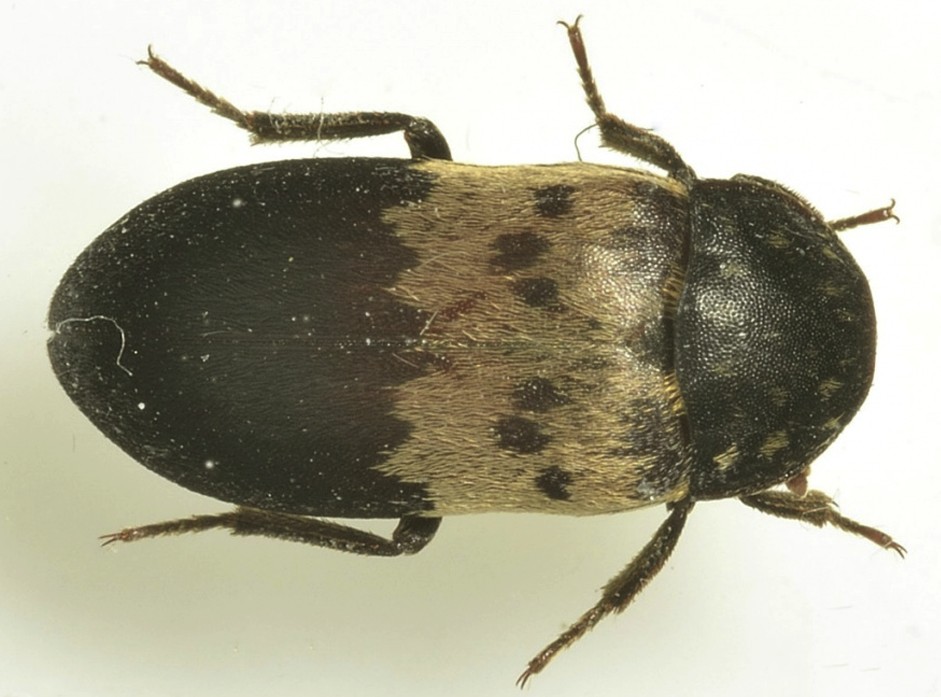
The larder beetle is not an uncommon pest. Being a household bug, it is an extensive pest whose name comes from its presence in parched, cured meats that are stored at room temperature before freezing. These bugs nowadays are probably a pest in stored foodstuff and other items consisting of high protein content. Larder beetles, which are found in open-air, play an essential role not only in the dissection, but reprocessing of animal protein as well.
There is no denying the fact that the buying meat in small quantities, lack of proper home curing of meats and the use of refrigeration have drastically lessened the economic significance of this bug. However, these insects are commonly found in homes, mills, livestock facilities, museums, and any place comprising an appropriate source for food.
The infestation by larder beetles is quite a common occurrence in homes and businesses and can cause an adverse effect on both homeowners and those running a business. These unwelcome pesky little creatures can be a real pain during the winter when they are more likely to live through the winter in homes.
Usually found close to stored food items, furs, weathers, hides, and dog food, these pests ensure that they continue to exist in one’s home provided the condition is stable enough for them. However, they can also penetrate the house in early spring for laying their eggs.
As mentioned above, these bugs play an imperative role when it comes to recycling, apart from being common in every nook and corner of the world. Mostly, they feast upon any dead animal they come across, which not only includes animal hair but flesh too. But, this vicious cravings or uncontrollable desire for food can cause these critters to scavenge on homes as well as other buildings where they will have a hard time feeding.
Being strong flyers, larder beetles are enticed by rotting flesh and decaying meat. If truth be told, they not only will make a way into but nest in stored products, such as cheese or pet food. These pests have a weakness for hanging meat, including sausage and ham. They don’t eat as much as their young ones do, albeit adult pests fascinated by such food.
Appearance and Size
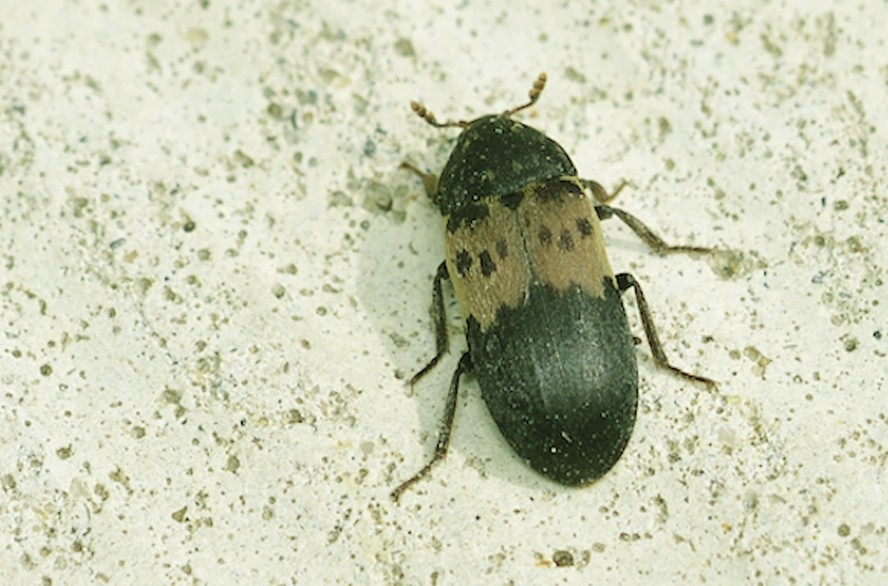
Picture of Larder beetle
Larder beetles are small in size, aside from being dark. They usually come loaded with a light gray to brown band around their midsection. However, they can not only be completely solid but homogeneous in color.
An adult larder beetle is either black or dark brown in color with the yellowish middle having dots on the back. You are not able to see it, but they are covered with fine hairs, especially their legs. An adult larder beetle can be up to ¼ inch long.
There is no question that larder beetles can be often puzzled with for other types of bugs found in the pantry. Such pests are more likely to invade stored food items. But, some features distinguish larder beetles from other types of pests. These include:
- The wings of larder beetles are covered in small yellow hairs.
- Just like the adult pest, the larvae (brown in color) are also covered in hairs.
- The larvae are nearly ½ an inch in length.
- There are several products in which larder beetles are easily found, including stored cheese, pet food (dog and cat), stored foodstuff, dried fish, tobacco, etc.
It can rightly be stated that the adult is somewhat longer than 1/4th inch. Being completely oval, it is dark brown to black with a typical band in a light color that usually runs across the body. This light band consists of 6 more or less notorious dark spots. Larvae are narrow in shape and covered with thin, hard hair. Moreover, there are two growing spines with a curve on the latter end.
Life Cycle
A larder beetle lives through the winter as an adult in sheltered places. In the spring season, adults are enticed by those places that can provide them with suitable food items. Female larder beetles can lay more than 100 eggs. These eggs take around two weeks to hatch. Larvae, on the other hand, will eat protein-rich food for 40-50 days before they can pupate and transform into adult larder beetles.
Larvae search for such confined sites so that they can keep from cannibalism during the pupation period. They can effortlessly not only masticate paper, but they can chew through the cork, light plastic, tin, etc.
Being fierce eaters, larvae can probably continue to feed for up to 8 months (of course, it depends on dampness, quality of food, and temperature). Once larvae get their food, they will leave the food source to hunt for a secure location on which they can pupate. This location could be in a thin crack, or even on a tree.
There is no doubt that larvae have extensively been known to cause extreme damage to homes as well as buildings during their hunt for finding protected refuge. The cocoon takes at least a week before they can fully emerge as adults. However, this process could be delayed if it is extremely cold or other weather conditions hinder the process.
Are Larder Beetles Dangerous?
Larder beetles are not harmful to humans because they don’t sink their teeth into their skin. Also, they don’t sting humans. However, they will make a mess of your stored food products, such as cheese and cured meats.
Dermestes lardarius is an omnipresent insect. While it is not damaging for humans, the larvae and shed skins (from moulting) because of hair or feathers have fallen out for making way for new growth can trigger allergies in some individuals. This is the reason why it is crucial to eliminate these pests (larder beetles) from your house the moment you come across the infestation or notice their presence.
How Do Larder Beetles get into Your House?
Well, spring and fall are the two seasons of the year when larder beetles invade one’s home. In the spring season, these critters search for a perfect place where they can lay their eggs. In the fall, on the other hand, they are attracted to the inviting atmosphere of your home.
They gain access to the building through attics, torn window screens, wall fissures, cracks and other openings that lead indoors. You won’t get to know when these unwanted creatures get into your house on cardboard boxes or carry bags. Even rotten food can make them enter the house.
Also, you might find signs of larder beetles behind the stove, and they are occasionally found behind electrical outlets as well as switches and not to mention, around piping and electrical wires. Make sure you check in the attic. There can be a possibility that larder beetles may have found their shelter in the places that are seldom used.
What Do Larder beetles Eat?
Larder beetles usually munch through plenty of food items that consist of animal fats as well as proteins, including:
- Bones
- Bacon
- Cooked Meats
- Fat
- Ham
Thinking if that’s all these pests feed on? They are fond of just about everything and anything, including:
- Dry animal food
- Hair and fur
- Cake
- Cheese
- Fabrics
- Insects (ladybugs and earthworms)
- Dead skin
- Flowers
- Rodent and bird carcasses
It may surprise you to know that these bugs will even practice cannibalism and will gladly feed on the larvae of other larder beetles.
Larder Beetles Pictures
Here are some more Pictures of Larder Beetles:
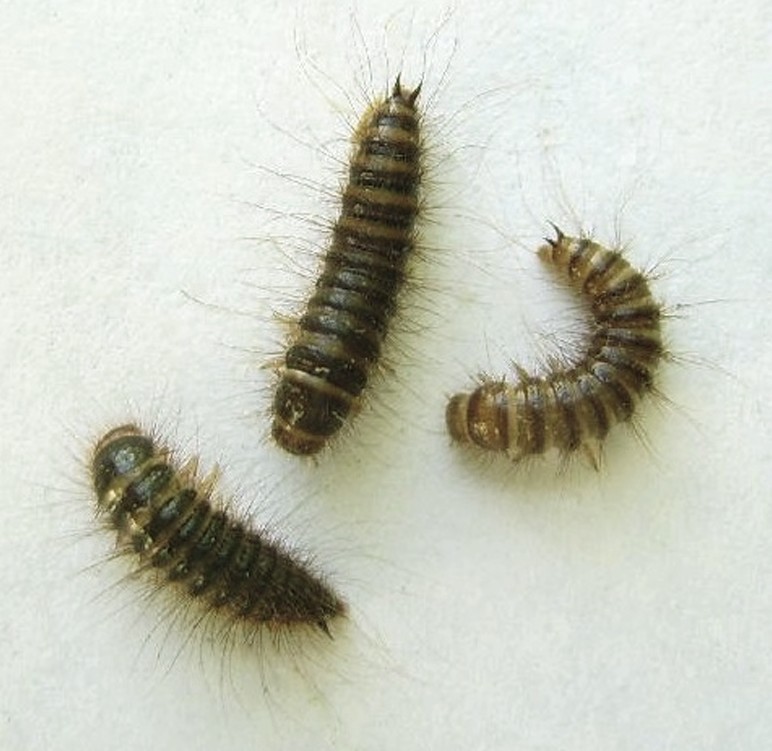
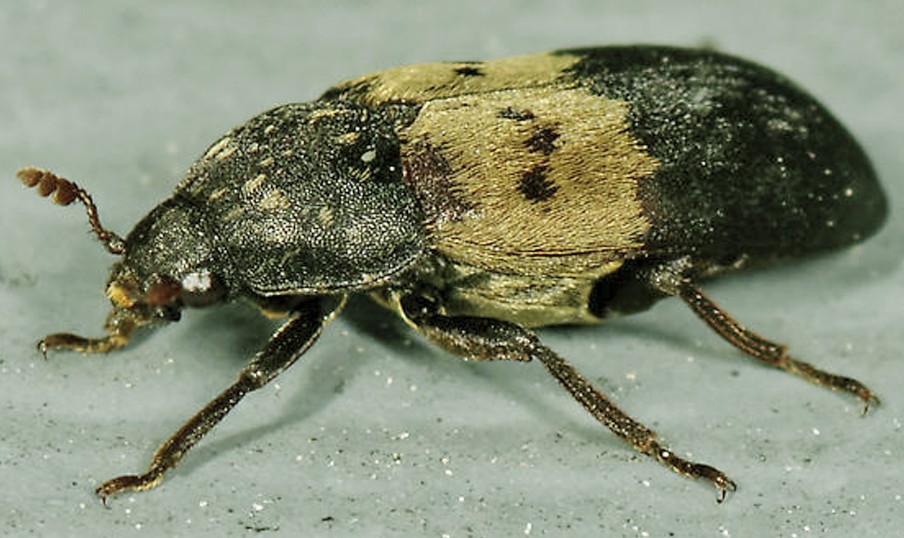
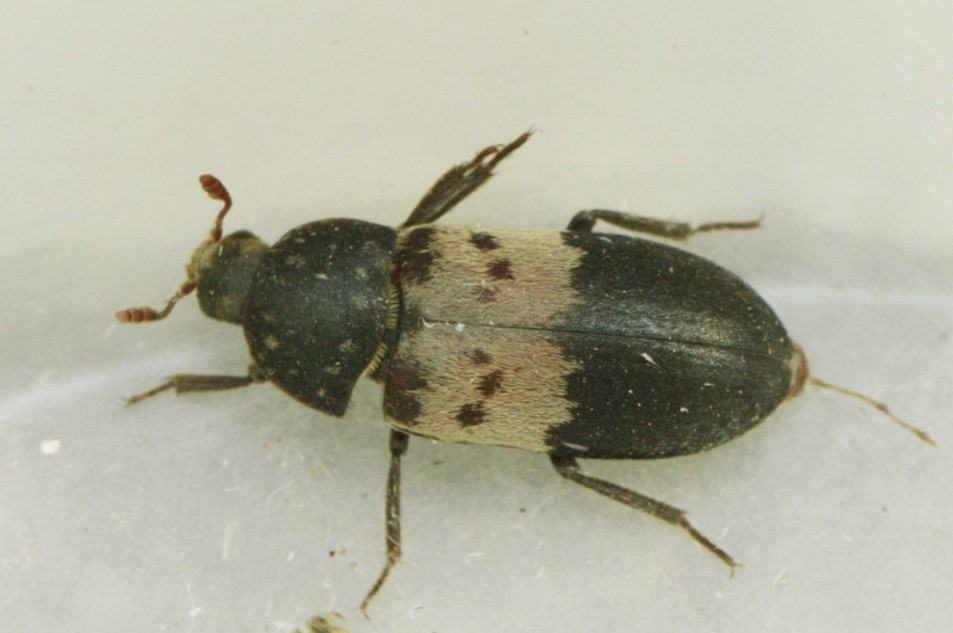
How to Get Rid of Larder Beetles?
There are some useful tips that you must consider to control larder beetles, such as:
- The first step to control the infestation is to discover infested foodstuff.
- Once you have found, the source must be removed, or a lasting treatment should be applied into the empty space or hole to eliminate the beetles and larvae that are feeding on the source.
- Consider calling in a professional pest control service provider, as they can help you find difficult sources of infestation.
If you are looking to get rid of larder beetles, know that inspection plays a very vital role to control. Before you even consider the treatment, it is essential for you to understand where these unwelcome pests are located and what it is that’s pulling them towards your house. During the inspection, you will search for larder beetle’s activity and items that are infested.
Where Should You Inspect?
Most of the infestations by these pests start with indoors, so begin your search in kitchens, garages, basements, storage rooms and attics. In the kitchen, consider looking at stored food items, including pantries. In attics and basements or the place where you have kept storage items, search in fur, animal trophies, rugs, animal skins, etc. As far as outdoors is concerned, look for possible animal corpses.
Using Pesticides
The best option to get rid of larder beetles is to have them removed physically (consider a vacuum) the instant you catch sight of these pests. Keep in mind that pesticide sprays or dust applied indoors will be ineffective, so make sure that the food source is eradicated.
You can easily lower overwintering pests (larder beetles) by treating them during the fall season before they make their way inside your home.
Make sure you:
- Seal both spaces and cracks around your home, preventing pests from entering your home.
- Apply an enduring pesticide around your building exterior.
Note: Get in touch with pest management professional for the right and the most effective treatment for your home to keep away from insects that sleep through winter.
Fed up of taking up the challenge of getting rid of the larder beetle problem single-handedly? No problem! There are some vital things that must be taken into consideration, including:
- Clean your Kitchen
- Invest in Good Quality Plastic/Glass Storage Containers
- Put Dried Bay Leaves
- Buy Some Chemical Sprays
Steps to Take to Eliminate Larder Beetles in Your Home
Some of the steps to get rid of larder beetles in your home include:
- Deep clean your home
- Seal food items
- Keep animal hide and leather products protected
- Reduce litter in and around your home
- Discard damaged items
Facts
- Larder beetles enter homes in the spring season by way of gaps and spaces on the building exteriors.
- If larvae bore in the wood repeatedly, severe damage can occur to structural wood.
- These pests were named for their fascination to cured meats.
- It is not common for larder beetles to feast upon stored food items.
- Larder beetles feed on dead insects, birds or animals that get trapped in attics or empty spaces of buildings.
